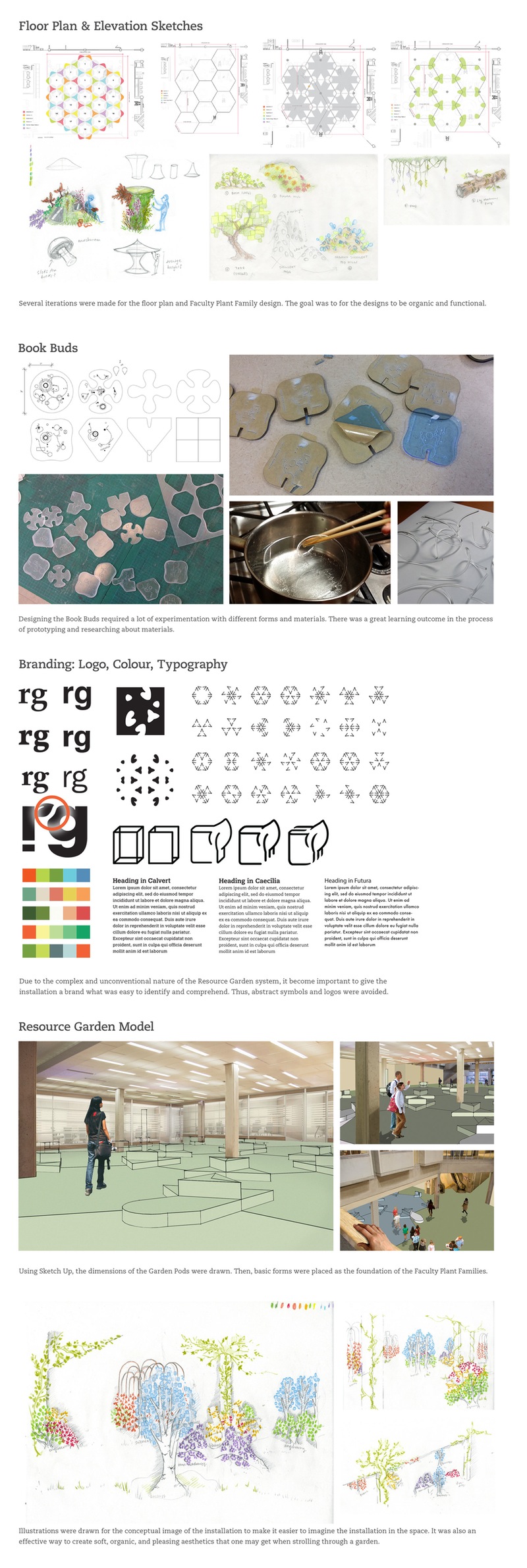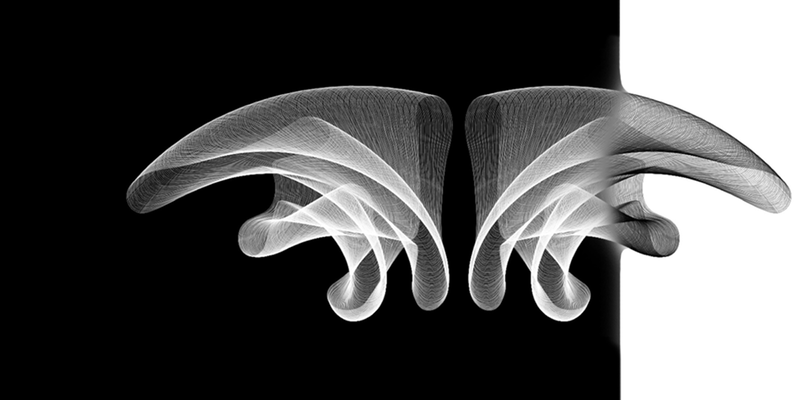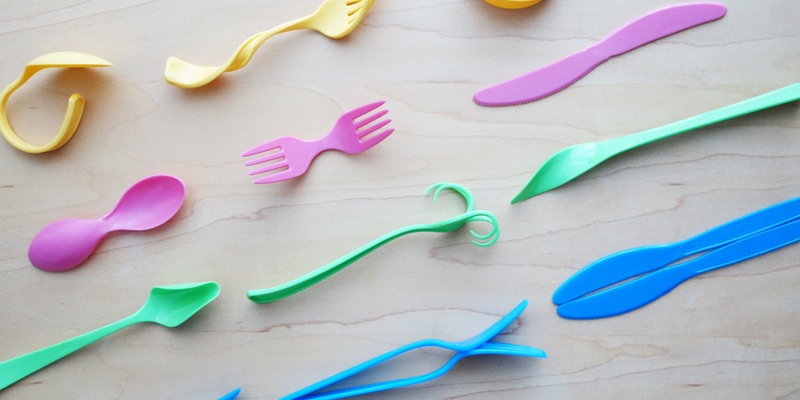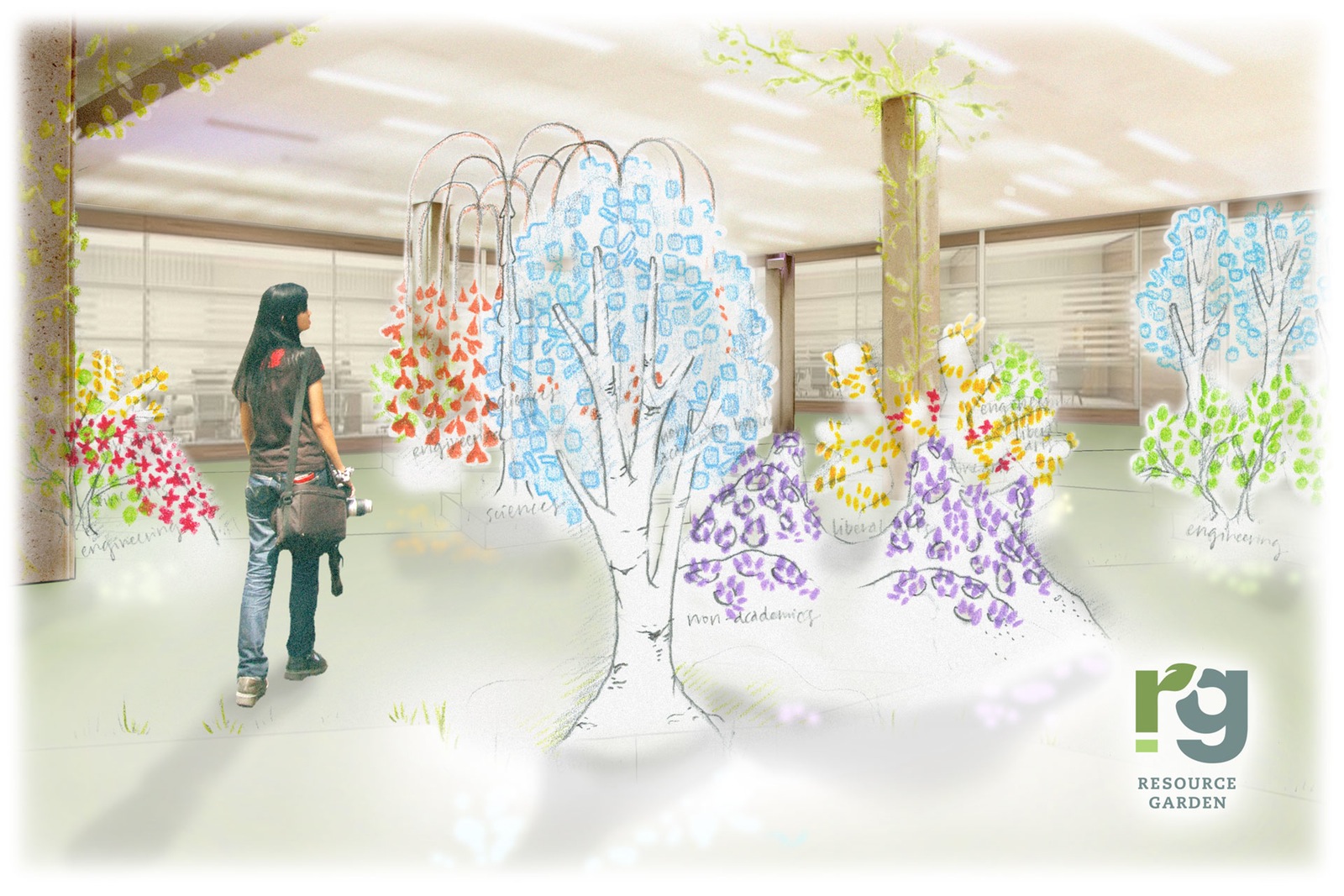
How can the search experience within a school library promote curiosity and encourage multidisciplinary exploration?
Problem
Online library catalogues promise to do the difficult labour for the user, but the promise of speed and efficiency from online results takes away the learning process and unplanned moments of discovery. These are critical pivoting steps that students should have when starting a research project. Students also want to find resources that they can understand, which prevents them from searching for sources outside of their scope of familiarity. Entering key search words are not always intuitive when trying to find reliable and useful books and articles.
Solution
Give students the opportunity to search and visualize search results related to their topic from various faculties within their school. By finding resources from different disciplines, students gain holistic and critical perspectives on their topic.
I designed a proposal for an interactive garden installation within York University’s Scott Library that provides a way for students to begin research-based assignments as a journey that explores multiple disciplines.
The Resource Garden is an experiential design proposal that includes a floor plan, elevation chart, user journey, mobile application, and artefact prototypes.
User Journey
Watch this video of Eve as she demonstrates a user’s journey of the Resource Garden.
Design
Floor Plan
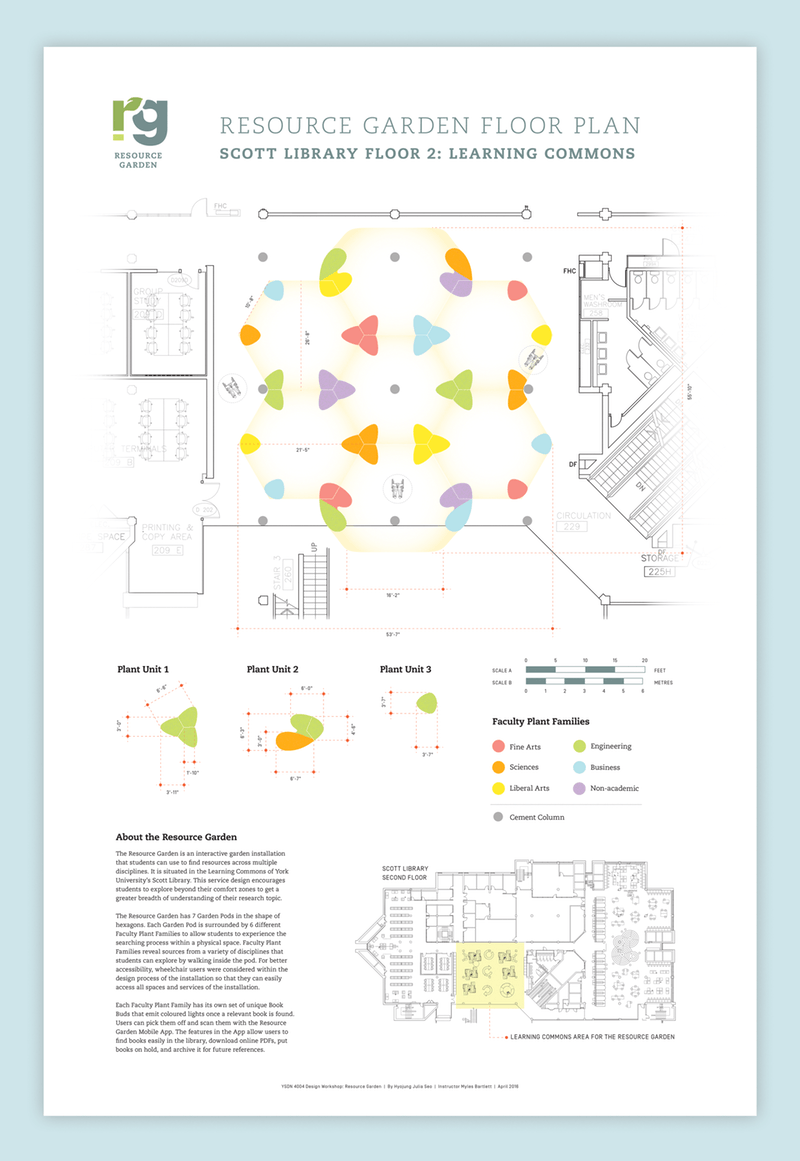
Resource Garden Floor Plan
20”x30”
The Resource Garden is situated in the Learning Commons of York University’s Scott Library. It has 7 garden pods in the shape of hexagons. Each garden pod is surrounded by 6 different Faculty Plant Families to allow students to experience the searching process within a physical space. Faculty Plant Families reveal sources from a variety of disciplines that students can explore by walking inside the pod. Wheelchair users were considered in the design of the installation so that they have access to all spaces and services.
Each Faculty Plant Family has its own set of unique Book Buds that emit coloured lights once a relevant book is found. Users can pick them off and scan them with the Resource Garden Mobile App. The features in the App allow users to find books easily in the library, download online PDFs, put books on hold, and archive it for future references.
Elevation Chart
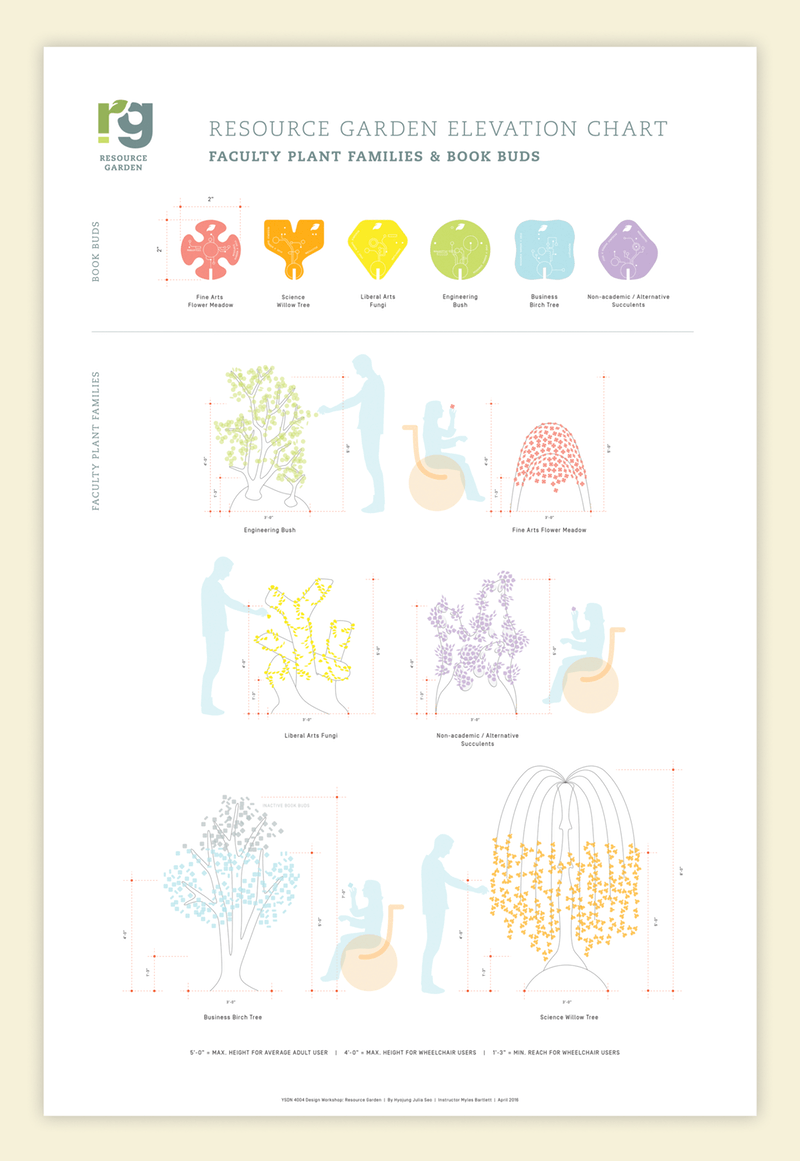
Resource Garden Elevation Chart
20”x30”
Book Buds (Prototypes)
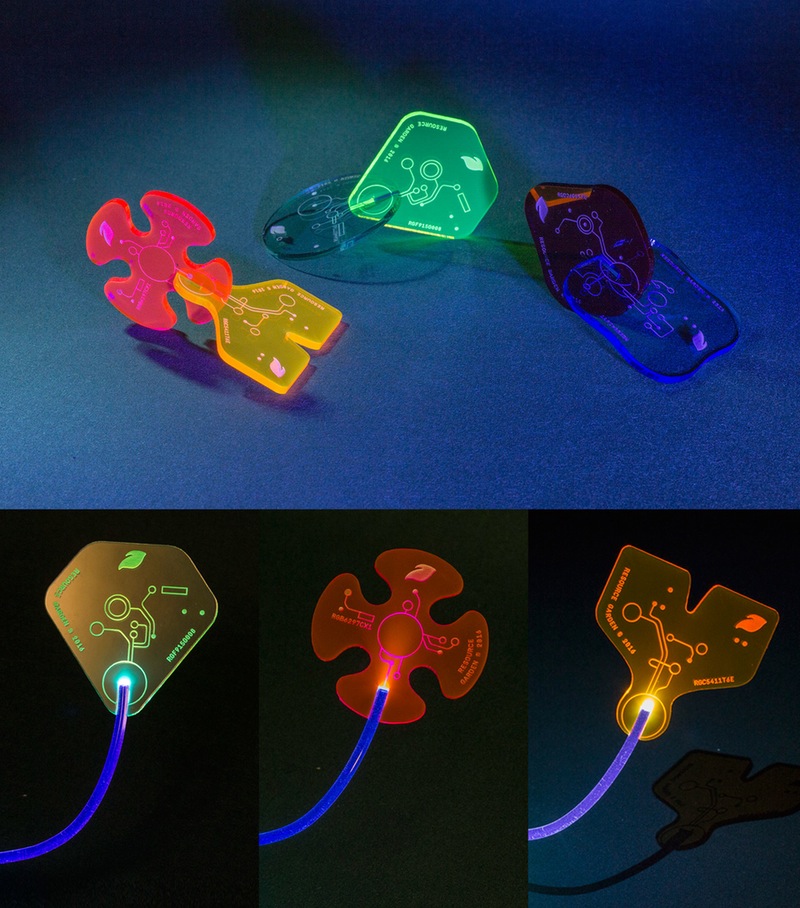
Book Buds
2”x2” Laser cut acrylic
The Book Buds are acrylic pieces that emit light when a search result is found in its corresponding faculty. Upon activation through the Resource Garden App, it will store information about the book the user wants to find in the library. Fibre optic cables connect the Book Buds to the search engine system. Book Buds contain Near Field Communication (NFC) chips that can store information once it is transferred from the search engine system through the fibre optic cables. Users can then pick them off like picking a leaf off of a plant and scan the NFC chips to find the book’s location in the library. Users can make several actions upon scanning the Book Bud, which is mentioned in the next section.
Mobile App

Resource Garden Mobile App: Flow chart & wireframes
The Resource Garden App allows users to interact with the Book Buds in the Garden Pod. It is where users enter key words of their research topic to get the visualization of results in the garden. When the device is in close proximity to a Faculty Plant Family, it scans the search results from the faculty and displays them to the user. After selecting a search result in the app, Book Buds will respond by emitting coloured lights and storing information that can be scanned.
Scanning Book Buds with the app allows the user to locate the book in the library, download a PDF if the result is an online resource, or add it to a wish list if it has been checked out. Since this garden system requires a mobile device to host this app, the library must allow users to rent devices with the app installed if they do not have their own smart-devices.
Proposal Book
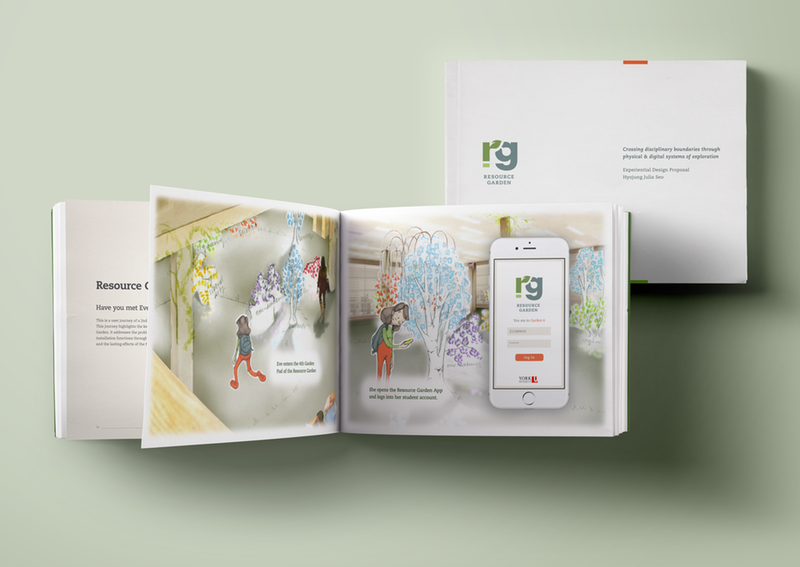
Proposal Book for the Resource Garden
12”x9” Soft cover perfect-bound book
The design, research, and process documentation pieces are contained in this proposal book.
Research Methods
After visiting 7 academic and public libraries in Toronto and the G.T.A., photos were taken to get an overview of how people use the library for various purposes. I specifically focused on the user’s journey of the learning commons area because a great portion of the library’s service is provided there. I took notes on how people interacted with the employees, other guests, technological devices, and the architectural space. These notes were then put together in an A.E.I.O.U. chart to display the similarities and differences between many qualities.
An online survey was also conducted to find out the immediate concerns students had about their school library. Many comments were made about their search experience and thoughts about the role of librarians.
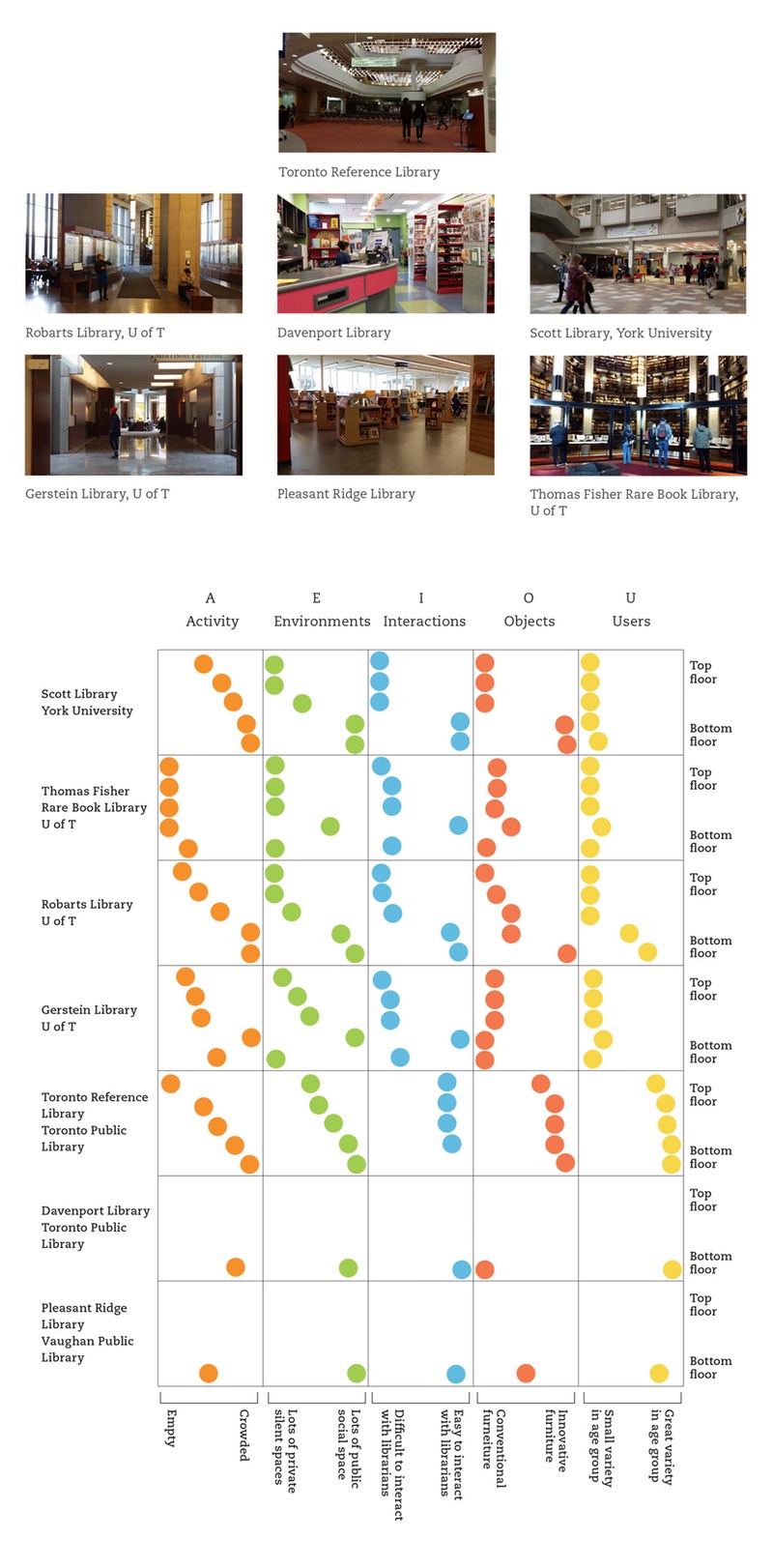
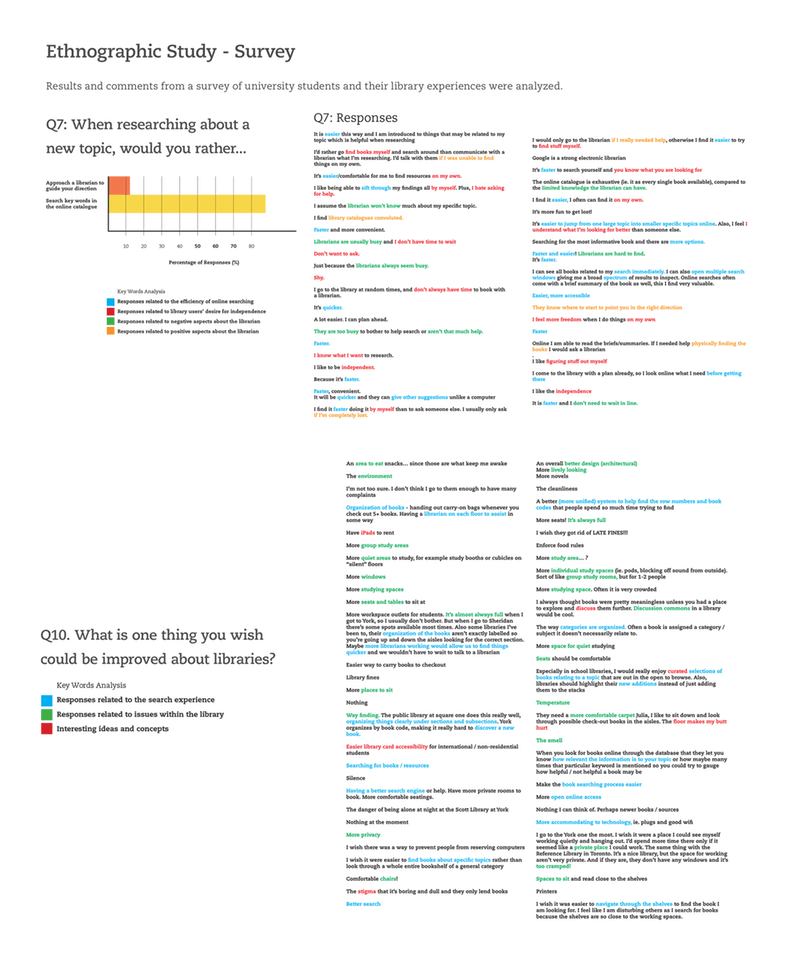
Design Process
